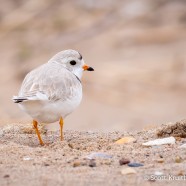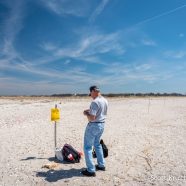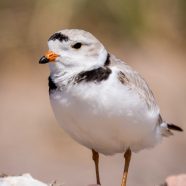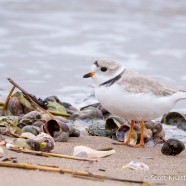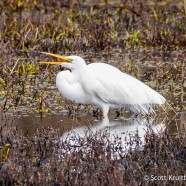Piping Plover Monitoring
This Piping Plover may be asking, “What do you plan to do about beach conservation today?” as we continue our nonstop work to help monitor and protect them, the American Oystercatcher, Least and Common Terns, and more imperiled waterbird species that nest in Connecticut. It has been a difficult stretch of weather for us in the Audubon Alliance for Coastal Waterbirds (Audubon Connecticut and the Roger Tory Peterson Institute of Natural History), and we have a ton of field work, outreach and education to get done with a limited staff. We have nests that have been washed out by...
Read MoreFencing & Signage Operations Complete
Last week we finished string fencing and signage operations for the Audubon Alliance for Coastal Waterbirds on our Connecticut beaches. We had a tremendous volunteer turnout at some of the most difficult and critical sites including Sandy/Morse Points in West Haven, Bluff Point State Park in Groton, and Long Beach in Stratford. It was a gorgeous April day for this work at Long Beach, and most of it was completed in only a few hours thanks to the terrific help. This work was completed just in time as we now have the first Piping Plover and American Oystercatcher nests of 2016...
Read MoreCT DEEP AAfCW Beach Training
A big thank you to the volunteers who attended Connecticut Department of Energy and Environmental Protection training on how to monitor Piping Plovers and Least Terns at Sandy/Morse Points in West Haven this past Sunday. CT DEEP Wildlife Biologist Laura Saucier was joined by Audubon Connecticut Waterbird Technician Ewa Holland and me in my role as Audubon Alliance for Coastal Waterbirds Volunteer Coordinator. We gathered with our monitors on the beach on a truly beautiful Sunday morning with the sun shining brightly on the shore. Laura discussed the finer points of how to approach these...
Read MorePiping Plover Feeding
I photographed this likely female Piping Plover while she was feeding along the surf recently on another chilly day. The nesting season looked as if it was going to start early for us this year, but the April cold snap that followed the warmth of March has delayed everything for two or three weeks, if not more! That makes both their jobs and ours more difficult as a slower beginning means more people will be around more nests and young birds when the “beach season” starts around Memorial Day with a negative impact on their overall success. It also narrows their available nesting...
Read MoreGreat Egrets Return
Here we have one of the many returning Great Egrets seeking out our ponds, lakes and shores throughout the Northeast. This one, photographed last weekend, was in the middle of gulping down a snack. Our weather looks to be improving towards warmer and more typical conditions soon. Perhaps we can say goodbye to snow and freezing temperatures, making life for these birds – and their prey – that much easier. Egrets are a beautiful sight, and one of those species that even the non-birder recognizes and enjoys seeing back in our waters.
Read More



